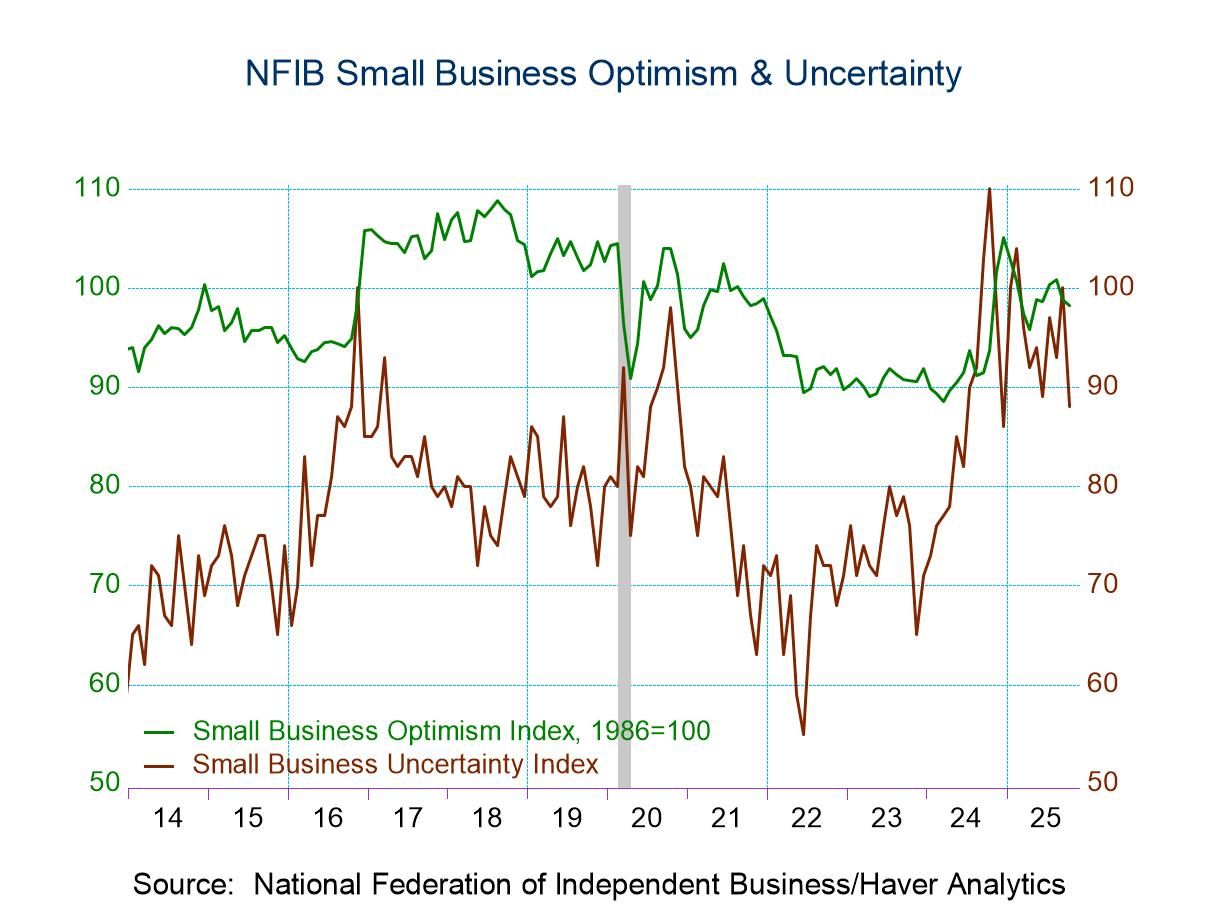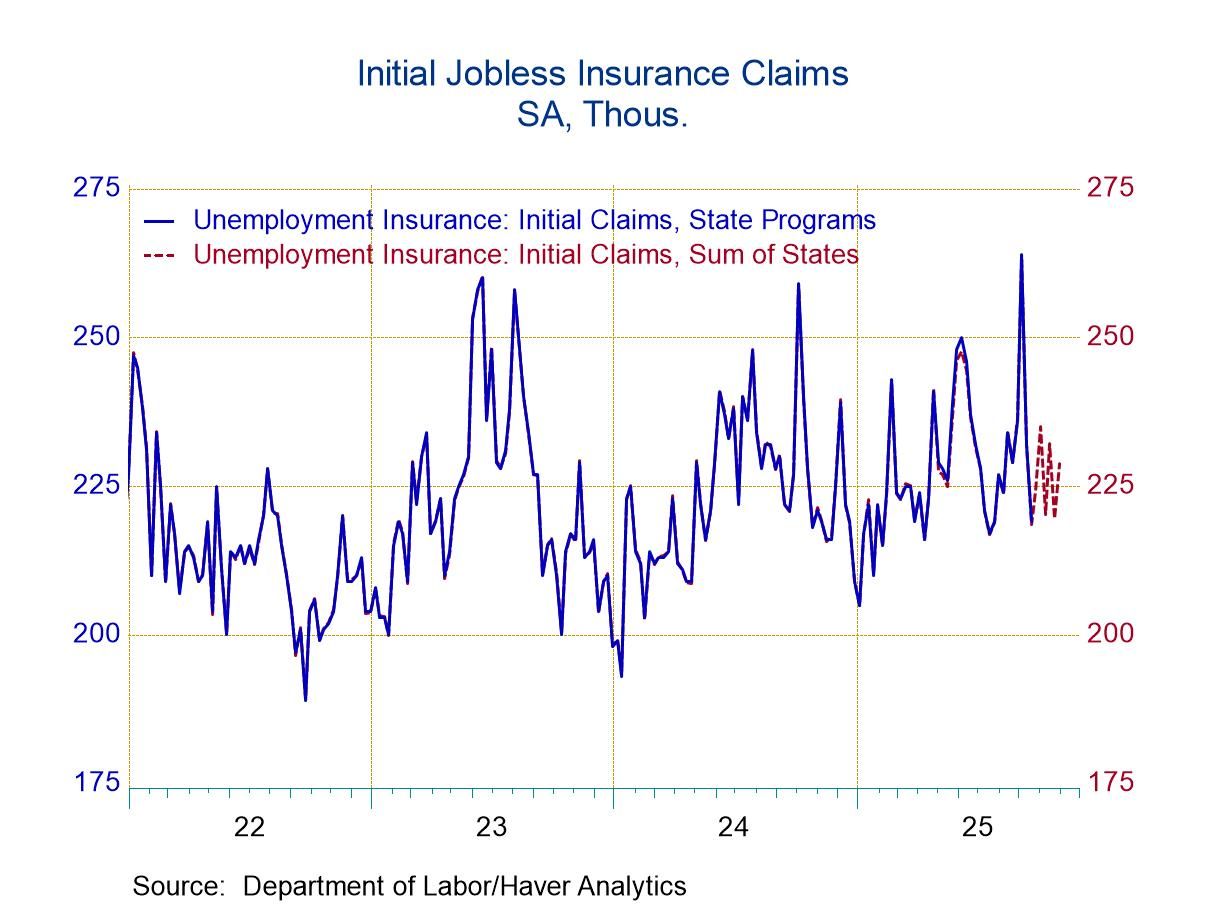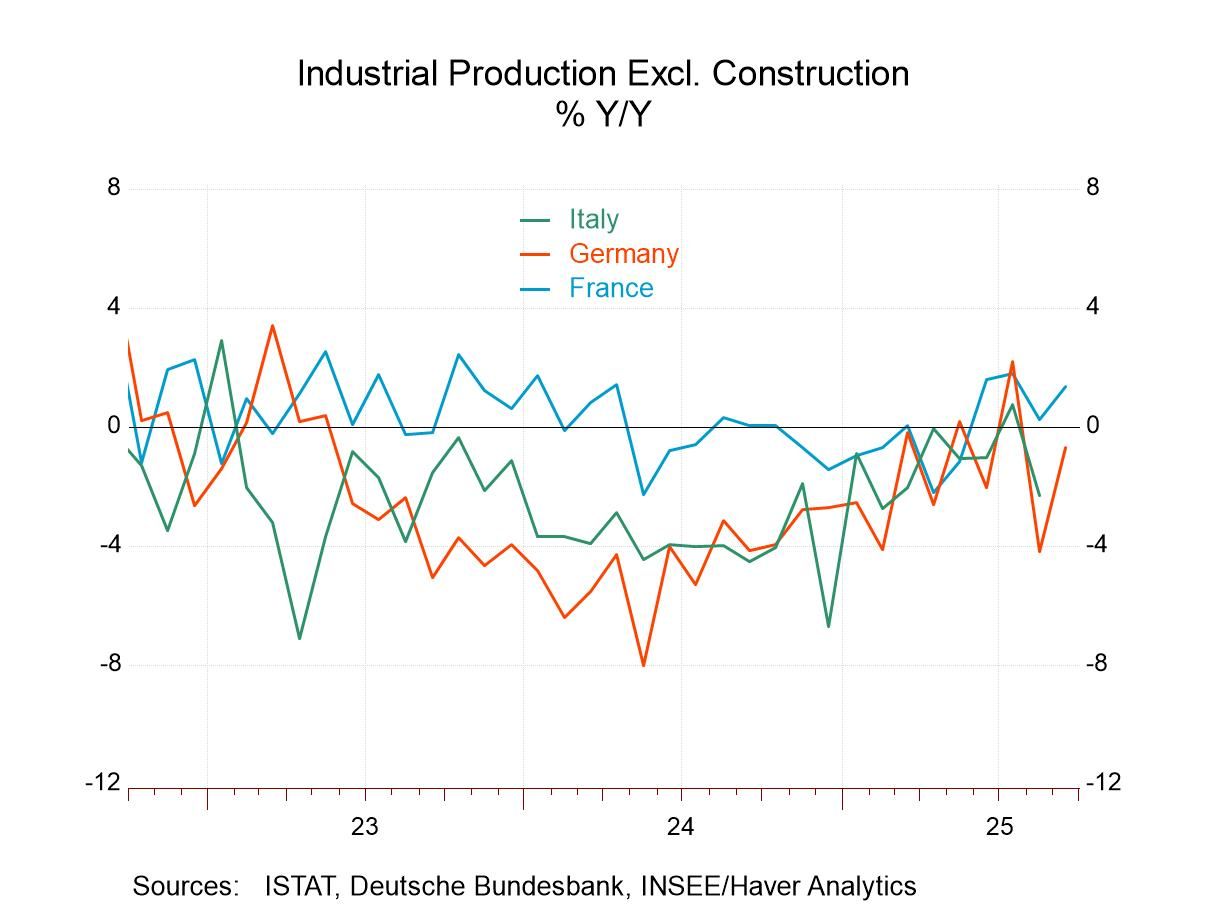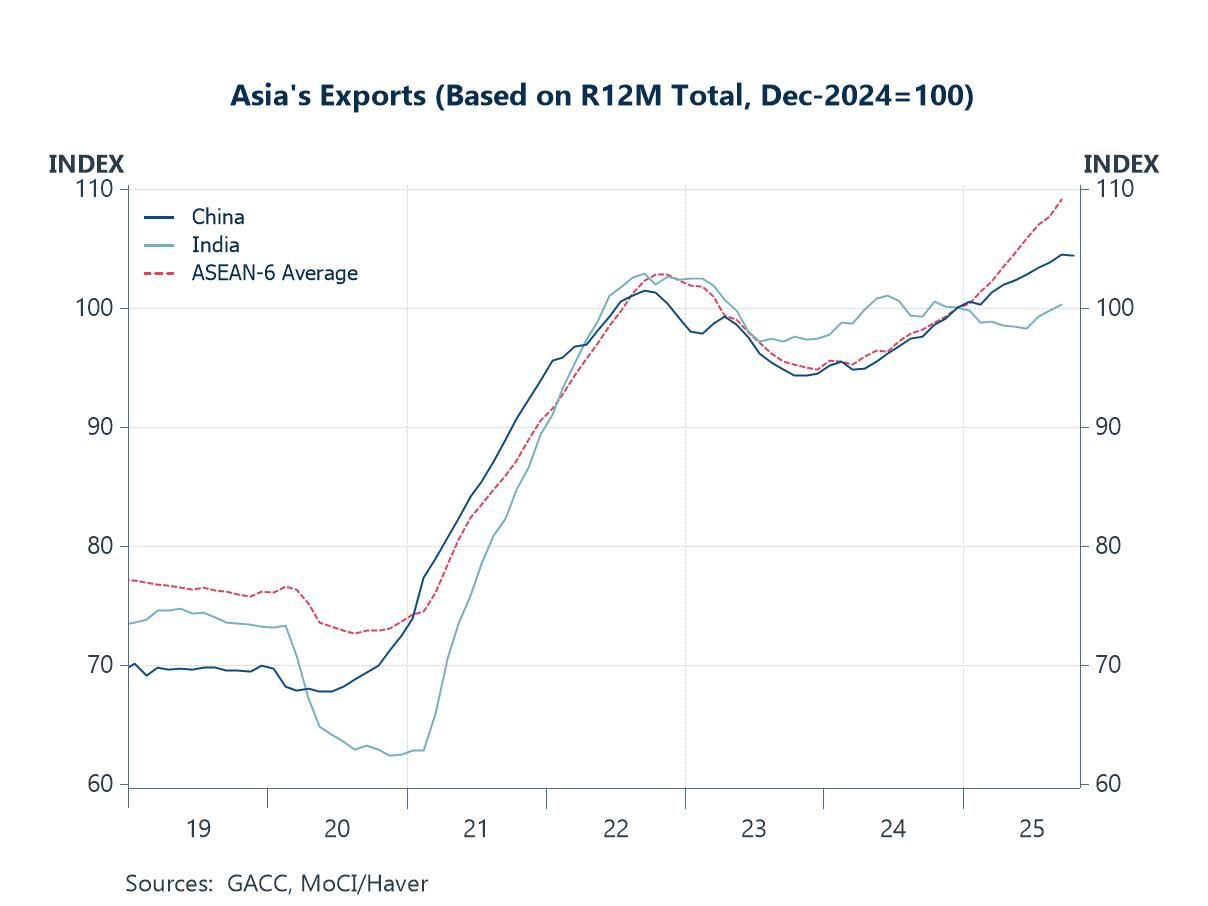Chicago Fed National Activity Index Slips During June
by:Tom Moeller
|in:Economy in Brief
Summary
- Three of four component series are negative.
- Production falls sharply.
- Three-month average has been negative since November.


The Federal Reserve Bank of Chicago reported that its National Activity Index (CFNAI) slipped to -0.32 in June from -0.28 in May, revised from -0.15. The June CFNAI was constructed using data available as of July 20, 2023. At that time, June data for 51 of the 85 indicators had been published. For all missing data, estimates were used in constructing the index.
Smoothing out month-to-month volatility, the index's three-month moving average improved to -0.16 last month from -0.21 in May. This index is expressed in standard deviation units from zero (with a value of zero defined as trend real GDP growth). Research at the FRB Chicago indicates that average readings of -0.70 or below are consistent with the economy being in a recession.
The June decline in the monthly figure was led by a weakening in the production & income indicator, which contributed -0.27 in June to the CFNAI after -0.20 in May. The sales & inventories series’ contribution retreated -0.05 after falling -0.01. The personal consumption & housing indicator dipped, contributing -0.02 to the June decline after a -0.01 contribution in May. Working the other way, employment-related indicators contributed 0.03 points to the CFNAI in June after falling 0.06 points in May.
The CFNAI Diffusion Index, which measures the breadth of movement in the component series and is also a three-month moving average, moved up to -0.12 in June from –0.17 in May. Thirty-one of the 85 individual indicators made positive contributions to the CFNAI in June, while 54 made negative contributions. Thirty-three indicators improved in June, while 51 indicators deteriorated and one was unchanged. Of the indicators that improved, 13 made negative contributions.
The CFNAI is a weighted average of 85 monthly indicators of national economic activity. It is constructed to have an average value of zero and a standard deviation of one. Since economic activity tends toward trend growth rate over time, a positive index reading corresponds to growth above trend and a negative index reading corresponds to growth below trend.
These figures are available in Haver’s SURVEYS database.
Tom Moeller
AuthorMore in Author Profile »Prior to joining Haver Analytics in 2000, Mr. Moeller worked as the Economist at Chancellor Capital Management from 1985 to 1999. There, he developed comprehensive economic forecasts and interpreted economic data for equity and fixed income portfolio managers. Also at Chancellor, Mr. Moeller worked as an equity analyst and was responsible for researching and rating companies in the economically sensitive automobile and housing industries for investment in Chancellor’s equity portfolio. Prior to joining Chancellor, Mr. Moeller was an Economist at Citibank from 1979 to 1984. He also analyzed pricing behavior in the metals industry for the Council on Wage and Price Stability in Washington, D.C. In 1999, Mr. Moeller received the award for most accurate forecast from the Forecasters' Club of New York. From 1990 to 1992 he was President of the New York Association for Business Economists. Mr. Moeller earned an M.B.A. in Finance from Fordham University, where he graduated in 1987. He holds a Bachelor of Arts in Economics from George Washington University.







 Asia
Asia